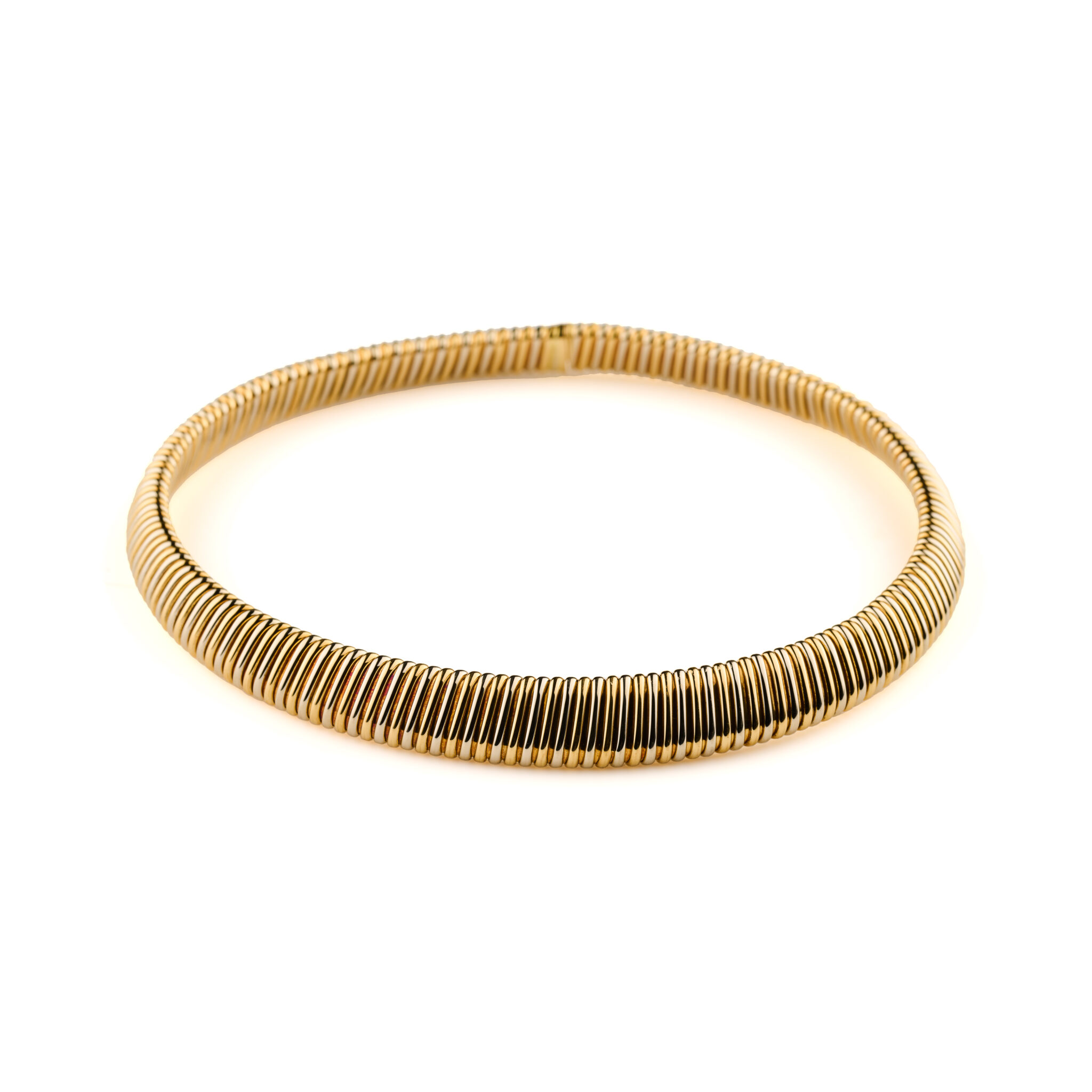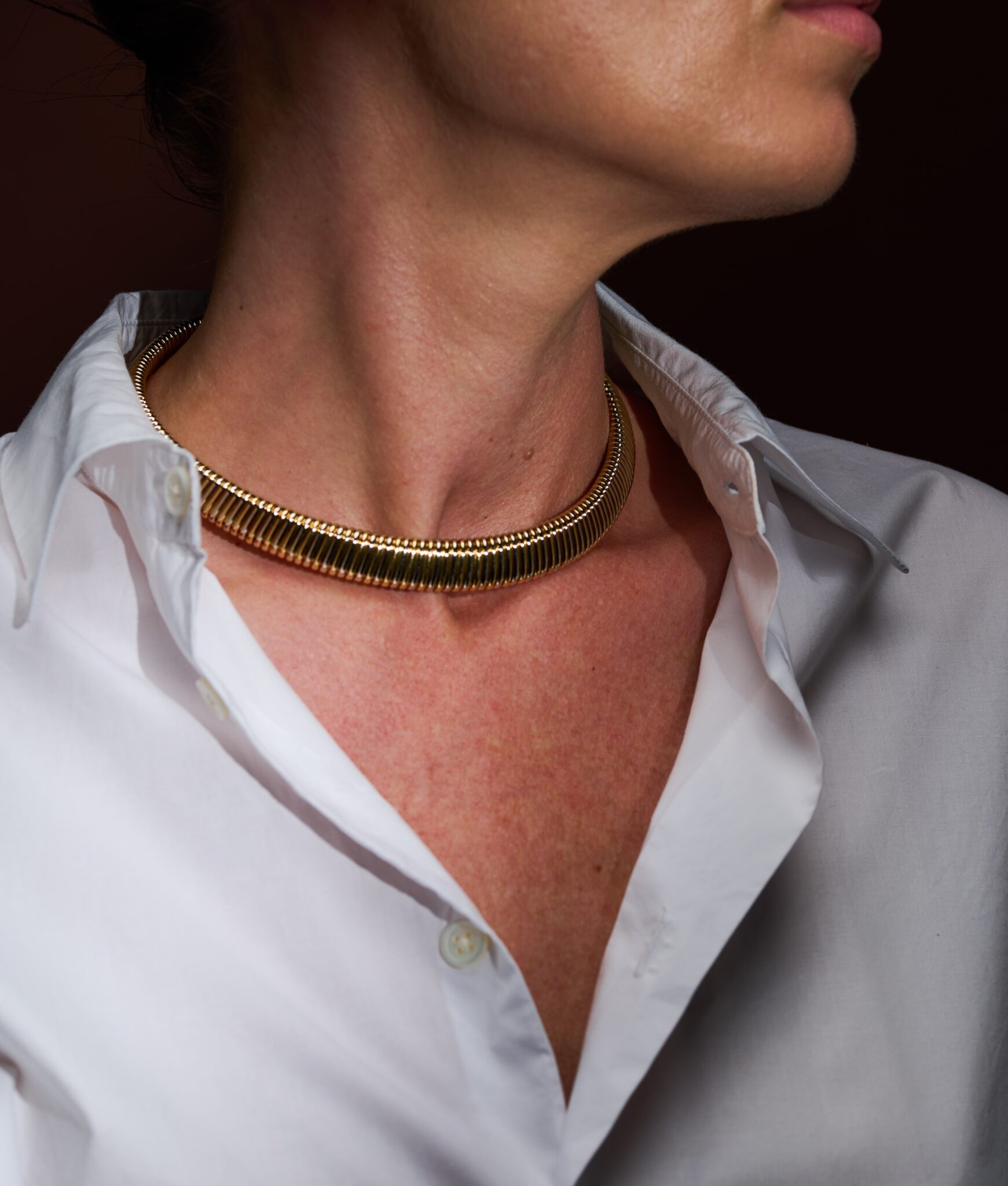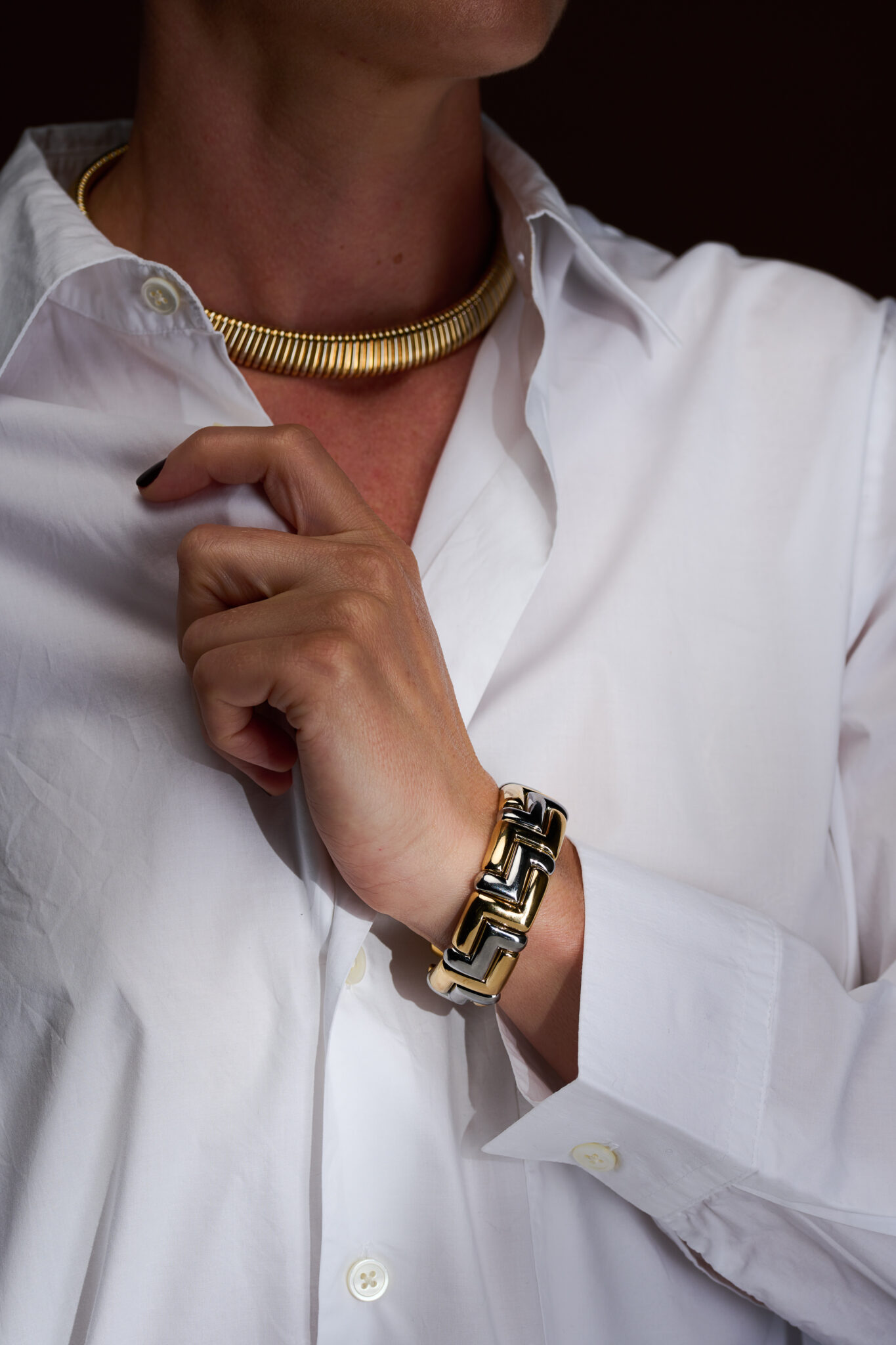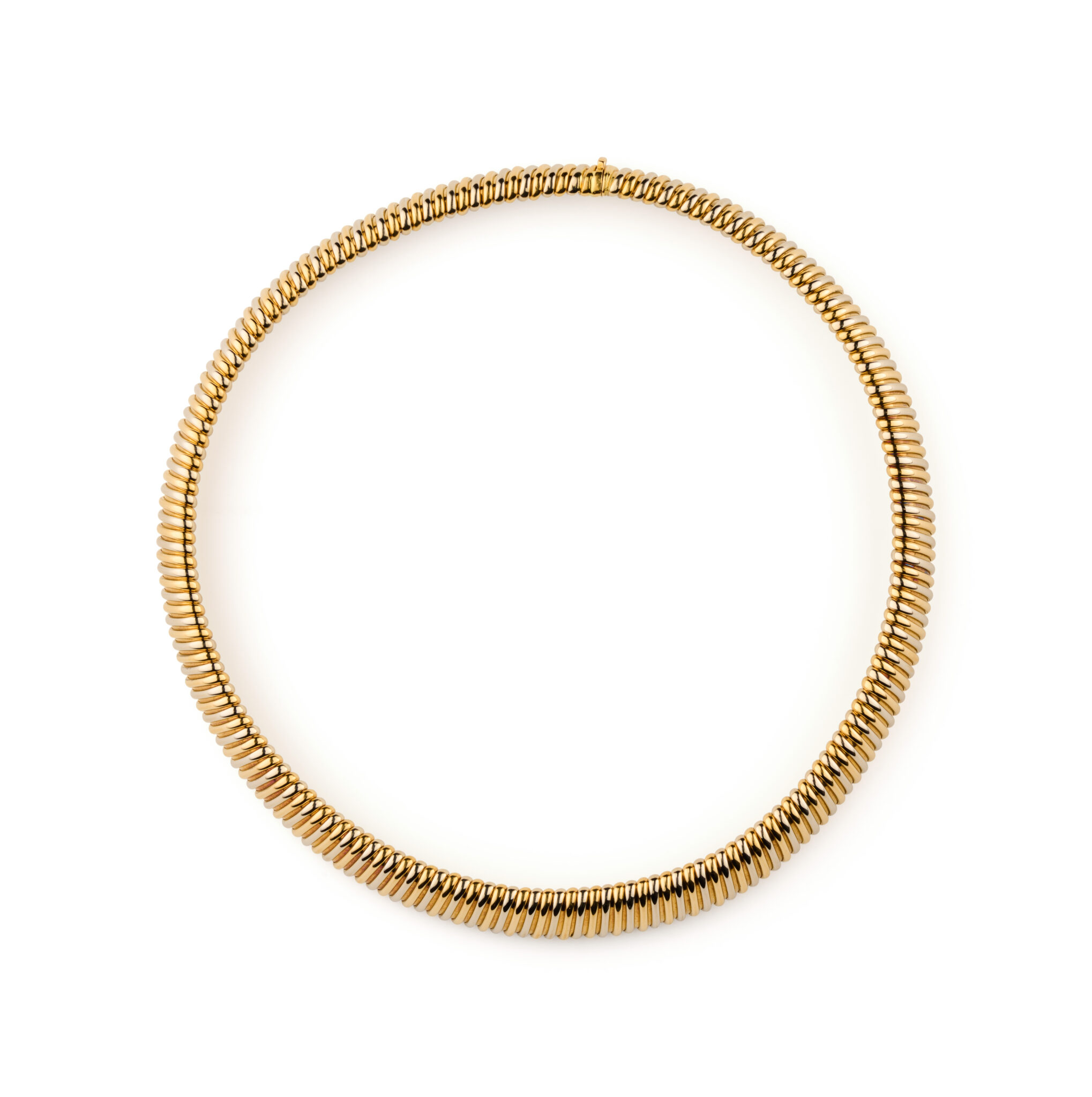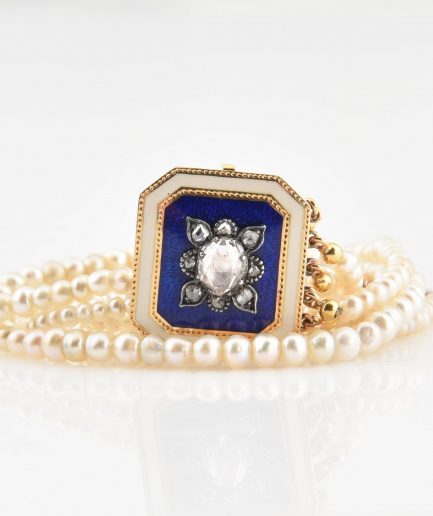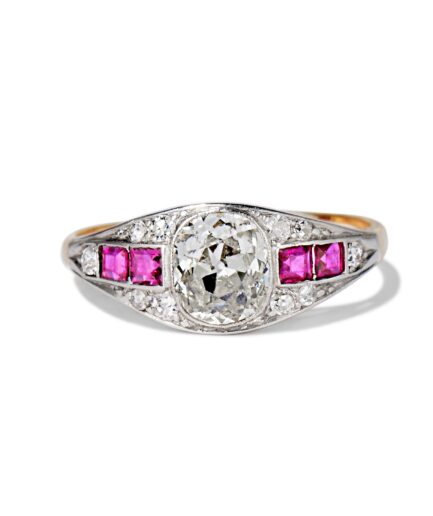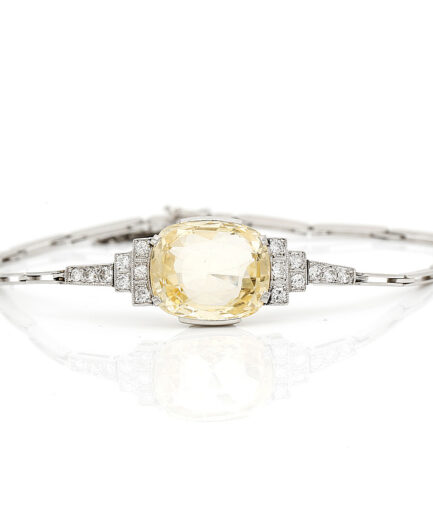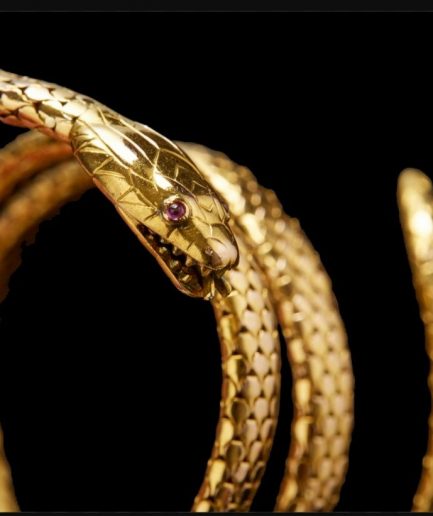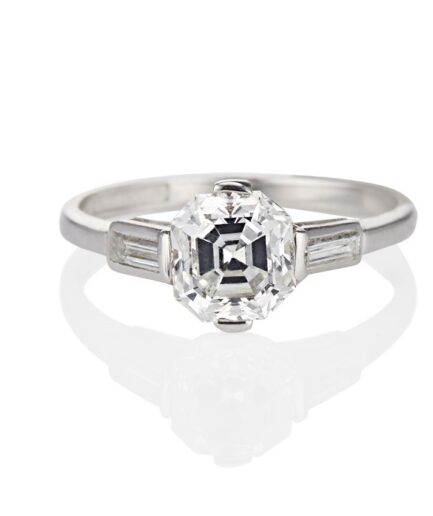A 18karat bi-color gold tubogas necklace By Master Carlo Weingrill circa 1970
Of graduating gaspipe-link design, in 18 Karat gold, signed Weingrill, with maker’s mark for Weingrill, length 39cm
The Tubogas is a flexible metal pipe patented in 1881. In the 1940s, it was discovered by jewelers, who gave it a glittering future.
Tubogas changed names almost as often as a snake changes its skin: “skeleton key”, “spirotube”, “gas pipe”, “Serpenti”. But it was the Second World War that sealed its destiny. The Tubogas was originally a corrugated tube made of articulated bands used to transport pressurized gas
Being one of the most characteristic and successful designs, the gold Tubogas: a flexible band of sleek and polished contours produced without soldering, a powerful representation of skill. Its construction, which requires hours of skilled craftsmanship, consists of wrapping two long strips with raised edges around a core – either of copper or wood. The edges then interlock onto another, requiring no soldering. The core is then removed, either by simply drawing it out or dissolving it in acid. The flexibility of such a gold band is truly remarkable and has been employed to great effect in the production of necklaces by single or multiple bands of Tubogas.
Carlo Weingrill, undisputed maestro of golden craftsmanship,
Carlo Weingrill was founded in 1879, and the number 1 piece produced, was exactly this Tubogas. In the 20’s Van Cleef & Arpel made this piece even more popular, and in the late 1960’s it was even further relaunched by Bvlgari, for which Carlo Weingrill has produced a large quantity of pieces.
Four generations of Italian gold artisans have built a House that exemplifies fine craftsmanship, exquisite detail, and timeless design.
Carlo Weingrill was born in Verona, Italy, in 1856. At the age of eleven, he began his apprenticeship in a goldsmith’s shop. Upon completing his training at the age of 22, he made the decision to open his own workshop in 1879 in Verona. Every piece was handmade using traditional artisan techniques and designed to be worn and enjoyed regularly, sing the highest quality materials coupled with exceptional craftsmanship.
The business flourished, and Carlo brought his two sons, Armando and Gastone, into the business. They took over upon Carlo’s death in 1924, and grew the small artisan concern into a major player in the industry, gaining worldwide prestige for their exquisite workmanship.
Upon Armando’s death in 1959, Gastone continued to carry on as head of the business.
Armando’s daughter, Paola Weingrill, was the next in line to take on the business. From the time she was a toddler, Paola was fascinated with the goldsmiths and their work. When her Uncle Gastone passed away in 1977, it was Paola who took over as chief executive officer. Paola groomed her son, Carlofilippo Mensi Weingrill, to assume the reins of the company upon her retirement. Carlofilippo is now head of the firm, representing the fourth generation to head this illustrious House.
From the beginning, the company employed goldsmiths who handcrafted their jewelry, eschewing the use of machines. Workers sat at a table molding, shining and polishing the gold to a stunning finish.
In Italy, a craftsman could become a goldsmith after apprenticing for two years, At Weingrill, apprenticeships lasted seven years. Gold has always been the mainstay of the company, using diamonds and gemstones sparingly. The distinctive warm yellow tone of the Italian gold has become synonymous with the house. Weingrill’s goal has been to preserve their tradition of fine craftsmanship and produce wearable works of art using the finest materials, creating timeless pieces that endure for generations
In time the quality of Weingrill jewels would attract the attention of some of the biggest names in 20th century fine jewelry. Carlo Weingrill is credited with being the original manufacturer of some of the most recognizable gold jewelry designs. For Cartier they made the famous Trinity bangles, for Tiffany they made a variety of gold cuffs and bracelets and most famously they created the wonderful tubogas bracelets, necklaces and rings for Bvlgari. They made pieces for Hermes, Van Cleef & Arples And many more.
In their own words “A distinctive style does not come naturally; it requires close observation of the culture of the age, and a keen eye for form and line. Creativity is the art of balance, a way of turning subjective impressions into an entire aesthetic.”

